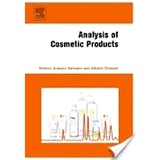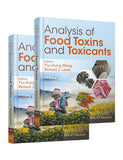Formulation and Analytical Development for Low-Dose Oral Drug Products edited by Jack Zheng
Formulation and Analytical Development for Low-Dose Oral Drug Products
edited by Jack Zheng
Formulation and Analytical Development for Low-Dose Oral Drug Products provides an overview of this specialized field and combines formulation, analytical, and regulatory aspects of low-dose development into a single reference book.
Formulation and Analytical Development for Low-Dose Oral Drug Products describes analytical methodologies like dissolution testing, solid state NMR, Raman microscopy, and LC-MS and presents manufacturing techniques such as granulation, compaction, and compression.
Contents
1. An Overview
Drug Discovery and Development Process
Challenges and Strategies in Development of Low-Dose Drug Products
2. Challenges and Strategies in Formulation Development of Oral Solid Low-Dose Drug Products
Current Regulatory Environment and Its Impact on New Drug Product Development
Challenges in Developing Low-Dose Formulations
Manufacturing Platforms for Low-Dose Drug Products
Use of Experimental Design in Formulation and Process Development
Containments
3. Particle Size of Drug Substance and Product Content Uniformity - Theoretical Considerations
Concept of Ideal Mixing
Ideal Mixing Model Comparison with the Yalkowsky and Bolton Approach
Experimental Support of Model Assumptions
Analytical and Practical Considerations
4. Development of Low-Dose Formulations Using Fluidized Bed Granulation
Granulation Fundamentals
Theory of Fluidization.
Formulation Development
Process Development
5. Development of Low-Dose Solid Oral Formulations Using Wet Granulation
Granulation Mechanisms
General Considerations on Wet Granulation
Advantages and Disadvantages of Wet Granulation
Use of Wet Granulation for Low-Dose Formulations
Process-induced Form Changes in Wet Granulation
6. Challenges in Development and Scale-Up of Low Dose Drug Products by Dry Granulation: A Case Study
Dry Granulation Process - Pros and Cons
Overview of Dry Granulation Processes and Equipment Design
Challenges for Low-Dose Product Development and Their Assessment Methods
Case Study: Formulation Challenges for Low-Dose Products
Process Challenges during Dry Granulation Optimization for Low-Dose Products
7. Development of Low-Dose Solid Oral Tablets Using Direct Compression
Advantages of Direct Compression
Challenges in Low-Dose Tablet Development Using Direct Compression
Formulation Development for Low-Dose Drug Products Using Direct Compression
Manufacturing Process Development for Low-Dose Drug Products
Scale-Up for Blending Operation
Formulation Examples for Direct Compression
8. Reduction of Particle Size of Drug Substance for Low-Dose Drug Products
Reduction of Particle Size of Drug Substance by Milling Technologies
Reduction of Particle Size of Drug Substance Using Crystallization Technologies
Scale Up Considerations
Emerging Technologies and Future Directions
9. Function, Quality and Regulations of Pharmaceutical Excipients for Oral Solid Dosage Forms
Classification of Pharmaceutical Excipients in Solid Dosage Forms
Physicochemical Attributes of Pharmaceutical Excipients 395
Regulatory Status and Excipient Quality
10. Analytical Method Development: Challenges and Solutions for Low-Dose Oral Dosage Forms
Case Study 1: Drug Adsorption to Surfaces
Case Study 2: Challenges due to Non-Drug Related Impurities
Case Study 3: HPLC Purity Method Development Challenges for a Fixed Combination Product Containing a Low-Dose Active Ingredient and a High Dose Active Ingredient
Case Study 4: Small Volume Dissolution Testing
11. In Vitro Dissolution Testing and Method Development
Overview of Dissolution Testing
Dissolution Method Development
Dissolution Method Development for Low-dose Oral Drug Products
12. Analysis of Physical Transformation of API During Manufacture and Storage
Discussion of Solid-State Forms
Monitoring Processing Steps
Measuring Transitions and Solid-Form Transformations in the Low-Dose Tablet
Common Methods Used for Examination of Solid Forms
13. Physical Characterization Tests for API Used in Low-Dose Formulations
General Issues in the Physical Characterization of Micronized Powders Used in Low-Dose Formulations
Particle Size Analysis
Specific Surface Area Analysis
14. An Excipient Library Approach to Analytical Development for Low-Dose, Solid Oral Dosage Form Drug Products
Importance of Excipient Absorbance Background to Low-Dose Impurity Analysis
Factors Affecting Excipient Absorbance Background
Use of Excipient Library
15. Cleaning Verification for Highly Potent Compounds
Cleaning Validation versus Cleaning Verification
Acceptance Limit Calculations
Analytical Method Validation
General Analytical Techniques
Analytical Techniques for Low-Dose Compounds
16. Containment Challenges and Strategies for Potent Compounds in the Pharmaceutical Industry
Safe Exposure Control Levels - Bands, Limits and Handling Guidance
The Hierarchy of Workplace Controls
Case Studies
17. Sample Handling and Containment in Analytical Testing Laboratories
Sample Handling Considerations
Handling Potent Compounds in Standard Analytical Laboratories
Handling Potent Compounds in a Containment Laboratory
Additional Considerations for Handling Potent Materials
18. Regulatory Considerations in the Development of Low-Dose Solid Oral Drug Products
Three-Pronged Approach to Low-Dose Formulations
Pharmaceutical Development Report
Facility Controls for Highly Potent Drugs
Index


















